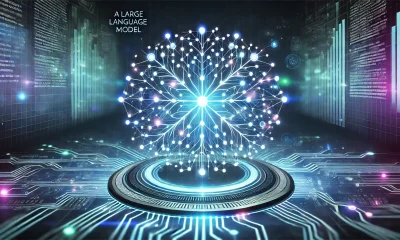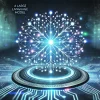Eğitim
What is RAG (Retrieval-Augmented Generation) in Artificial Intelligence?
Learn what RAG (Retrieval-Augmented Generation) is, how it works, and why it matters for the future of AI. A detailed guide fully optimized for 2025 SEO standards!
As artificial intelligence technologies continue to evolve rapidly, new methods are emerging to overcome the limitations of large language models (LLMs). One of the most promising approaches is called Retrieval-Augmented Generation (RAG).
But what exactly is RAG, and why is it so important today? In this article, we’ll dive deep into the RAG concept, its working principles, use cases, and advantages.
What is RAG (Retrieval-Augmented Generation)?
Retrieval-Augmented Generation combines two critical AI processes: retrieval (searching for information) and generation (creating new content).
In simple terms, RAG enables a language model not only to rely on its pre-trained knowledge but also to fetch real-time data from external sources to generate more accurate and up-to-date responses.
How Does the RAG Model Work?
The RAG workflow consists of two main steps:
- Retrieval:
The model searches for relevant information across an external knowledge base, document repository, or database based on the input query. - Generation:
Using the retrieved information, the model generates a coherent, contextually appropriate response.
This method dramatically improves the accuracy, relevance, and freshness of the answers provided by AI systems.
Why Was RAG Developed?
Traditional large language models (LLMs) are trained on massive datasets. However:
- Their knowledge is frozen at the time of training.
- They cannot access new information published after training.
- They struggle to generate accurate responses for niche or rapidly evolving topics.
RAG addresses these issues by:
- Injecting real-time knowledge into the model,
- Allowing domain-specific customization (such as corporate databases),
- Improving overall answer accuracy and contextual relevance.
This is particularly valuable in fields like healthcare, law, finance, and technical support.
Where is RAG Used?
RAG-based architectures are finding applications across multiple industries:
- Enterprise Knowledge Assistants:
Delivering accurate answers by retrieving internal company documentation. - Customer Support Chatbots:
Providing real-time, personalized responses based on FAQs and dynamic databases. - Academic Research:
Pulling information from scientific papers and databases to support researchers. - Search Engines:
Moving beyond keyword matching to answer natural language queries more effectively.
Key Advantages of RAG
- Freshness:
Ensures that responses are based on the latest available information without requiring constant model retraining. - Efficiency:
Reduces hallucinations (fabricated information) by grounding answers in real data. - Customization:
Organizations can seamlessly integrate their own data sources for personalized AI applications. - Accuracy:
Answers are better aligned with trusted and verifiable knowledge bases.
RAG and SEO: The Future of Content Creation
As of 2025, SEO strategies have shifted focus from simple keyword stuffing to content quality, accuracy, and freshness.
RAG-powered content creation can dramatically enhance SEO performance by:
- Offering users authentic, updated information they actually seek,
- Embedding target keywords naturally within highly relevant contexts,
- Boosting website authority and trustworthiness in search engine algorithms.
If you’re managing a blog, a corporate website, or any digital project, RAG-enabled content strategies can give you a significant competitive edge.
A New Era in AI
Retrieval-Augmented Generation (RAG) is setting a new standard in how AI systems generate information.
By blending pre-trained knowledge with real-time retrieval from external sources, RAG enables AI to deliver more accurate, up-to-date, and trustworthy responses.
In the coming years, we can expect RAG-powered systems to become widespread across industries such as healthcare, education, legal services, finance, and media.















